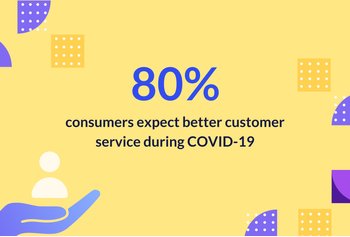11 Help Desk Best Practices to Deliver Efficient Customer Support

Table of contents
A help desk is often the initial touchpoint for customers seeking assistance. The quality of this interaction sets the tone for the entire service experience.
An efficient help desk helps businesses offer swift and effective resolution of customer issues.
This is precisely why implementing a strategic set of help desk best practices is crucial to providing exceptional customer support. It helps in improving the quality of customer interactions, ensures consistency in service delivery.
In this article, we outline some of the most important strategies and practices you need to keep in mind when implementing a help desk for customer support.
Table of Contents
- What is A Help Desk?
- The Link Between Help Desk Best Practices and Customer Satisfaction
- 11 Best Help Desk Practices for Delivering Better Customer Support
- 1. Thoroughly Understand Your Business Requirements
- 2. Choose the Right Help Desk Software
- 3. Offer Multi-channel Support
- 4. Set Clear Policies and Procedures
- 5. Create a Knowledge Base
- 6. Define Service Level Agreements or SLAs
- 7. Make Use of Automations
- 8. Ensure Clear and Concise Communication
- 9. Use Canned Responses or Templates
- 10. Track Key Performance Indicators
- 11. Foster Efficient Internal Collaboration
- Wrapping Up
What is A Help Desk?
A help desk is a software used by customer support teams to assist customers and resolve their queries. It helps support teams engage with customers across multiple channels such as email, live chat, phone, and social media.
One of the best things about a helpdesk is that it can enable support teams to organize, track, and collaborate on customer tickets, ensuring every complaint gets proper attention and a timely resolution.
The Link Between Help Desk Best Practices and Customer Satisfaction
Help desk best practices play a pivotal role in enhancing customer satisfaction by creating a streamlined and efficient support experience.
Here’s how these practices contribute to improved customer satisfaction:
1. Swift Issue Resolution
Well-defined best practices ensure a systematic approach to handling customer issues. This includes a robust ticketing system and clear escalation protocols that enable support teams to address problems promptly. The faster issues are resolved, the higher the level of customer satisfaction.
2. Clear Communication
Help desk best practices emphasize transparent and timely communication. Customers appreciate being kept in the loop regarding the status of their inquiries or issues. Clear and proactive communication helps manage expectations and fosters trust.
3. Clear SLAs and Real-Time Monitoring
Setting clear Service Level Agreements (SLAs) and monitoring performance of help desk metrics in real-time are best practices that help manage customer expectations. Meeting SLAs instills confidence in customers, while real-time monitoring ensures rapid responses to emerging issues.
4. Positive Brand Perception
Consistency in applying best practices contributes to positive brand perception. When customers consistently experience efficient, personalized, and proactive support, it builds trust and loyalty, directly influencing their overall satisfaction with the brand.
11 Best Help Desk Practices for Delivering Better Customer Support
Here are some best practices that you can implement to enhance your help desk’s capability to help in delivering exceptional support, improve customer satisfaction, and build stronger relationships.
1. Thoroughly Understand Your Business Requirements
Understanding your business requirements when implementing a help desk is essential for ensuring that your support operations are not only responsive to customer needs but also strategically aligned with the organization’s objectives. It enables you to optimize resource allocation, enhance customer satisfaction, and contribute to the overall success of your business.
For instance, let’s take a financial services company. Their primary business needs include data security, compliance with financial regulations, and maintaining a high level of customer trust.
In this case, here’s how a better understanding of their business needs influences the operation of their help desk.
- When handling support requests, the help desk agents prioritize security-related issues, such as potential data breaches or suspicious activities, to ensure that they are addressed promptly.
- The support team defines help desk SLAs that match the criticality of these issues. This minimizes disruptions to customers’ financial activities.
Tips to Align Your Help Desk with Business Requirements
Define Business Goals and Objectives
- Start by identifying your company’s overarching goals and objectives. This could include revenue targets, customer retention goals, or expansion plans.
- Understand how customer support aligns with these objectives and what role the helpdesk plays in achieving them.
Customer Journey Mapping
- Map out the customer journey from initial contact to issue resolution and post-support follow-up.
- Identify touch points where customer support can make the most significant impact on customer satisfaction and loyalty.
Data Analysis
- Utilize data analytics to gain insights into customer behavior, support ticket trends, and common issues.
- Analyze data to identify patterns that can help streamline support processes and improve service quality. This way, businesses can make targeted improvements to streamline these processes and reduce operational friction.
2. Choose the Right Help Desk Software
Select a best free help desk software that offers the features you need, like ticketing systems, knowledge bases, and customer feedback tools, and is scalable as your business grows. The right help desk software streamlines support processes, automates repetitive tasks, and centralizes customer information.
Tips to Choose the Right Help Desk Software:
Define Your Needs and Objectives
- Start by clearly defining your specific needs and objectives. What are your support goals, and what do you expect to achieve with help desk software?
- Consider factors like the volume of support requests, the complexity of issues, and the channels through which customers contact you.
Identify Key Features
- List the essential features you require in a help desk solution. These may include ticket management, automation, reporting and analytics, knowledge base management, multi-channel support, and integration capabilities.
- Another important aspect to ensure that your help desk can scale with your business as your support needs evolve and expand.
Check for User-Friendliness
- Choose software that is user-friendly for both your support agents and customers. A complex interface can hinder productivity and frustrate users.
- For instance, a help desk like Hiver works right inside Gmail. This means it is easy to set up and incredibly intuitive to use. Your users can get started with Hiver right away. No extensive training needed.
Evaluate Cost and Budget
- Understand the pricing structure of the software, including any subscription fees, licensing costs, or additional charges for features or users. Ensure it fits within your budget.
- For instance, with a help desk like Zendesk, you often end up paying for features you may never use. The ones you actually need cost extra. In contrast, opting for a solution like Hiver allows you to access critical support features such as shared inboxes, live chat, knowledge base, automation, etc. at 46% less cost.
You Might Also Like: Top 10 Help Desk Software for Small Businesses
3. Offer Multi-channel Support
Deploying a help desk that offers multichannel support is important for many reasons. For one, it allows customers to reach out to your business via their preferred channels, increasing convenience and accessibility.
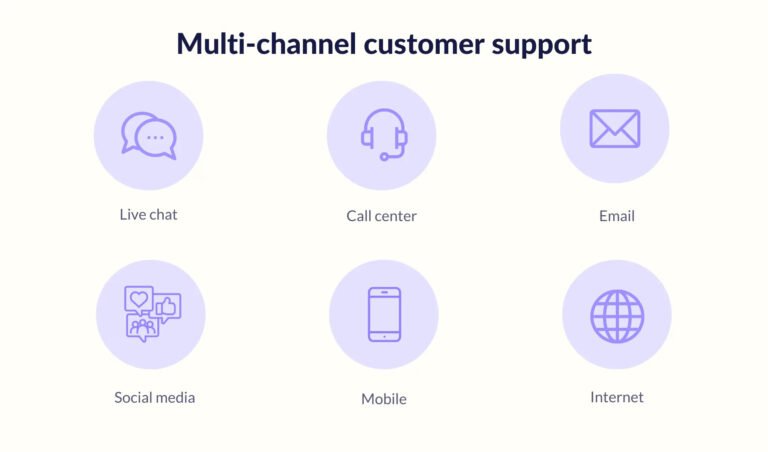
Multichannel support also ensures customers can seek assistance at any time. For instance, your customer service communication in such a way that email and self-service portals are available 24/7, while phone support may have limited hours.
A good example is Hiver’s powerful multi channel help desk. The platform offers several robust features that makes offering consistent support a breeze. It allows you to interact with customers across email, live chat, knowledge base, voice, and WhatsApp. Agents have complete context into every conversation, irrespective of which channel a query comes from.
Tips to Offer Multichannel Support:
When offering multichannel support, there are several important considerations to keep in mind to ensure a seamless and effective customer support experience.
- Customer Preferences: Understand your customers’ preferred communication channels. Analyze customer data to identify which channels are most commonly used and ensure you have a presence on those channels.
- Channel Consistency: Maintain a consistent level of service quality across all support channels. Customers should receive a similar level of responsiveness, professionalism, and assistance regardless of the channel they choose.
- Resource Allocation: Allocate resources based on channel demand. If certain channels are more heavily used, ensure you have an adequate number of support agents trained to handle inquiries that arrive on those channels.
- Unified Dashboard: Ensure your help desk has a unified dashboard that consolidates inquiries from all channels into a single view. This enables efficient ticket management and consistent customer interactions.
- Response Time: Define and adhere to response time standards for each channel. Customers expect timely responses, so ensure that inquiries are addressed promptly across all channels.
- Cross-Channel Support: Train support agents to offer cross-channel assistance when necessary. For example, if a customer starts a conversation on social media but needs a more in-depth discussion, agents should be able to transition to email or phone support.
4. Set Clear Policies and Procedures
Another important help desk best practice is to define proper guidelines for handling different types of customer queries, tickets, escalation processes, and resolution timeframe. Clear policies ensure that all customer support interactions are handled consistently, providing a uniform experience.
It also helps agents to resolve issues more efficiently, as they have a specific guideline to follow, reducing the decision-making time.
For instance, tech companies have well-documented procedures for support when handling technical complaints/queries about their software products. This includes initial troubleshooting steps, escalation protocols if the issue is beyond their expertise, and informing the customer about the estimated time for resolution.
Tips to Define Help Desk Guidelines:
Identify Common Complaint Types
Leverage analytics and past customer conversations to identify the most common complaint types. This could be product issues, billing complaints, service queries, technical problems, etc.
Hiver’s Email Tags is an excellent feature to help you categorize customer conversations based on type or priority.
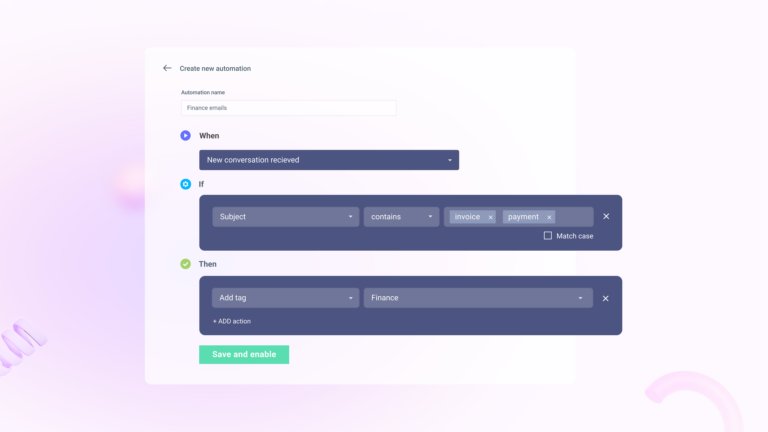
You can create email tags based on type of query such as product bugs, payment issues, exchanges etc. Incoming emails will be grouped under the appropriate tag based on the criteria you define. For instance, all emails with the term ‘Shipping’ in the subject line can be tagged as ‘Logistics’.
Your agents will then get a bird’s eye view of the different types of queries in their inbox and prioritize them accordingly
Standardize complaint handling procedures
Develop detailed guidelines on how to handle each type of complaint. It includes steps for troubleshooting, refund processes, escalation paths, etc. This is important because different complaints require different expertise and handling methods.
For instance, technical issues might need IT intervention, while billing issues might be better handled by finance specialists.
Define escalation procedures
Clearly outline the escalation path for complex or unresolved issues. Define when and how to involve supervisors, managers, or other departments when managing escalations.
For instance, there can be tiered escalation levels where ‘Level 1’ refers to handling basic, straightforward customer queries
Issues that cannot be resolved at this level should be escalated to level 2. Agents at this level possess specialized knowledge and tools to address more complex problems. If an issue remains unresolved at level 2 or requires further expertise, it should be escalated to level 3. This includes involving management or specialized teams within the organization.
Escalation procedures can also elaborate on the pathways that need to be followed whenever an issue is escalated. For example, when escalating from level 1 to level 2, the level 1 agent should document the issue and transfer it to a level 2 agent. The customer should be informed of the escalation.
By providing clear and well-defined escalation procedures, your helpdesk team can ensure that customer issues are addressed in a systematic and efficient manner, leading to improved customer satisfaction.
5. Create a Knowledge Base
A knowledge base serves as a repository of information – it includes articles, guides, FAQs, and troubleshooting steps. When support agents have access to this resource, they can quickly find answers to common customer queries and issues. This enables faster issue resolution, reducing customer wait times and improving overall service efficiency.
More importantly, a knowledge base is a self-service channel. It allows customers to find answers to simple queries by themselves. Aside from this, unlike human support agents who work specific hours, a knowledge base is available 24/7. Customers can access it at any time, including outside regular business hours or during weekends and holidays. This availability enhances customer satisfaction by providing assistance when customers need it most.
Hiver offers a knowledge base feature that allows you to easily build and host a centralized library of help articles.
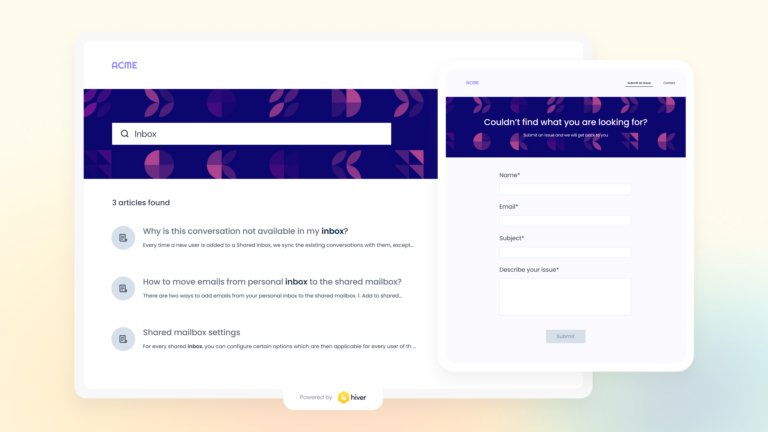
Hiver’s Knowledge Base has an intuitive interface and allows you to organize your help articles under different categories. This makes it easier for both customers and support agents to find information. You can also tailor the look and feel of your knowledge base so that it fits seamlessly within your website.
In situations where a user cannot find the answer they’re looking for, they can create a support ticket from directly inside the knowledge base.
You Might Also Like: How to Create A Knowledge Base in 8 Easy Steps
6. Define Service Level Agreements or SLAs
Defining Service Level Agreements (SLAs) is a crucial best practice because it sets clear expectations for help desk agents when it comes to issue resolution. SLAs also help in prioritizing support requests based on their urgency and impact on customers.
High-priority issues can be addressed quickly, while lower-priority ones can be handled with less urgency.
Besides, when support teams consistently meet SLAs, customers are more likely to be happy with the service provided. This leads to positive word-of-mouth recommendations and repeat business.
Hiver allows you to set SLA based reminders to ensure that all customer queries receive timely resolution.
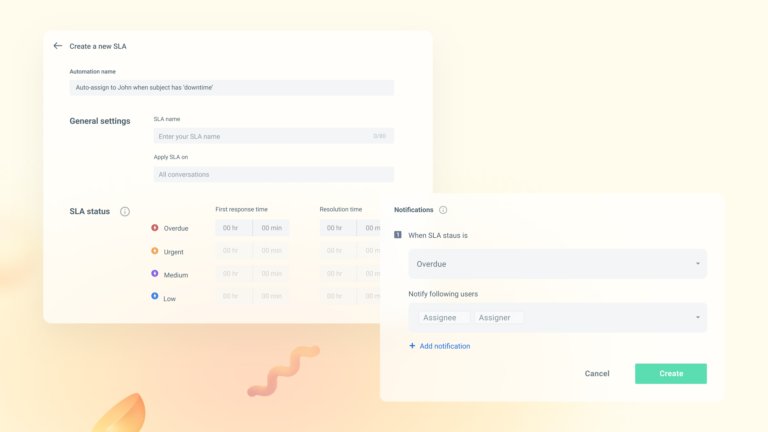
Hiver also allows you to define SLA violation conditions. This way any time an SLA is violated, the concerned teams are immediately notified with an ‘SLA violation’ tag on the customer query. For instance, say you define an SLA where the first response to any customer query has to be sent within two hours of receiving the complaint. If an email has not been responded within this timeframe, an SLA violation is triggered and relevant stakeholders are immediately notified.
Tips for Defining SLAs:
Segment Your SLAs
Different types of support requests may require different SLAs. Segment your SLAs based on the severity or type of issue.
For instance, say you are an ecommerce company. You’ve decided to categorize incoming queries into three priority levels: High, Medium, and Low. High priority requests require a response within 1-4 hours of receiving the query. Similarly, medium priority issues need to be responded to between 4-24 hours, and low priority requests can be responded to within 2 business days.
Set Realistic Timeframes
Ensure that the SLAs you set are realistic and achievable for your support team. Setting overly aggressive SLAs can lead to burnout and decreased quality of service.
Automate Where Possible
Implement automation to help meet SLAs more efficiently. Automation can be used for tasks like ticket routing, categorization, and sending initial responses, allowing agents to focus on more complex issues.
Consider Seasonal Variations
Take into account any seasonal fluctuations in customer support demand when defining SLAs. Adjust SLAs as needed during peak periods. For instance, an ecommerce store that normally responds to queries within 4 hours may adjust their SLAs to respond within 2 hours during the holiday season. This is because during this time, customer support requests increase significantly. Seasonal adjustments to SLAs can help businesses manage demand more effectively.
7. Make Use of Automations
Leveraging automation in a helpdesk can significantly enhance the efficiency and productivity of your support agents.
It can be used to categorize and prioritize incoming tickets based on predefined criteria, such as keywords, issue type, or customer status. This ensures that urgent issues are addressed promptly, reducing response times.
You can also use automations to provide automated responses to customers for routine inquiries.
Hiver offers robust automation capabilities that can take care of tasks like assigning customer emails and tagging messages. This allows your support agents to focus on more complex tasks.
For instance, with automated, conditional assignments, you can define conditions based on which incoming emails are routed to agents. For instance, all emails containing the word ‘Payment’ can be assigned to John – a finance specialist.
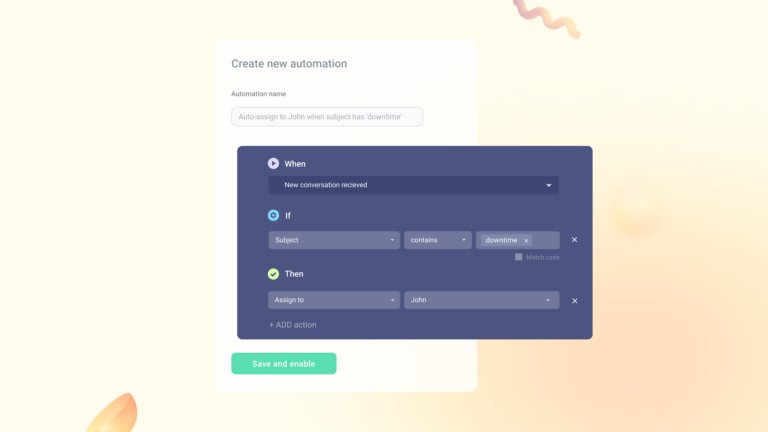
Another example is routing queries to agents based on their skill set. For instance, all emails containing the word ‘Shipping’ will only be assigned to the storage & distribution managers in the logistics team.
You can also use Hiver’s automation to auto-tag incoming queries and organize them by categories. For example, all conversations from [email protected] can be tagged as ‘High Priority’. This allows your agents to easily identify critical conversations and offer faster resolutions.
8. Ensure Clear and Concise Communication
Clear and concise communication is important because it directly impacts the efficiency of issue resolution and customer satisfaction.
When support agents communicate clearly and concisely, it becomes easier for the customer to implement the proposed solution.
This not only reduces the resolution time but also minimizes the risk of misunderstandings or frustration on the customer’s part.
Clear communication enhances professionalism, saves time and resources, and contributes to a positive experience, which is essential for maintaining customer loyalty and a positive brand image.
Tips to Ensure Clear Communication:
- Active Listening: Start by actively listening to the customer’s issue. Let them explain their problem fully without interruption, and ask clarifying questions if needed. Understanding the issue thoroughly is the first step to providing a clear response.
- Use Simple Language: Avoid technical jargon and use plain, everyday language that the customer can easily understand. If you must use technical terms, explain them in the simplest way possible.
- Use Visual Aids: If applicable, consider using screenshots, diagrams, or visual aids to illustrate your points. Visuals can sometimes convey information more clearly than plain text.
- Stay Calm and Patient: If the customer is frustrated or upset, maintain a calm and patient demeanor. Clear communication is especially important in these situations to reassure the customer and address their concerns effectively.
You Might Also Like: 11 Tips for Effective Communication with Customers
9. Use Canned Responses or Templates
Responding to common customer inquiries can be time-consuming when you have to do it manually. Canned responses and templates help save time by allowing support agents to quickly select and modify pre-written messages, enabling them to handle a higher volume of inquiries effectively.
Tips for Effectively Using Canned Responses:
- Avoid Generic Phrases: Steer clear of overly generic or robotic-sounding phrases. Aim for responses that feel more human and engaging.
- Test and Revise: Regularly review and update your canned responses to ensure they remain accurate and relevant. Customer needs and situations may change over time.
- Link to Resources: If applicable, include links to relevant articles, FAQs, or knowledge base entries within your canned responses. This can provide customers with additional information if they need it.
- Standard Responses for Uncommon Situation: While canned responses are typically used for common inquiries, consider creating standardized responses for less frequent or complex situations. This ensures consistency even in unique cases.
10. Track Key Performance Indicators
Tracking help desk key performance indicators (KPIs) is crucial because it provides valuable insights into the performance and effectiveness of your help desk operations.
They enable you to identify areas for improvement, whether it’s in response time, resolution rate, or customer satisfaction. With this data, you can make data-driven decisions to enhance support processes, allocate resources more effectively, and optimize help desk workflows.
It allows you to hold your help desk team accountable for meeting performance standards and provides a foundation for setting realistic goals and expectations.
Key Help Desk KPIs to Track:
- First Response Time (FRT): This measures the time it takes for a support agent to respond to a customer inquiry or ticket.
- First Contact Resolution (FCR) Rate: FCR measures the percentage of support requests or tickets that are resolved during the first interaction with a customer. A high FCR rate signifies efficient and effective support.
- Customer Satisfaction (CSAT) Score: CSAT is a direct measure of customer happiness with the support they received. It’s typically collected through post-interaction surveys and reflects the overall customer experience.
- Net Promoter Score (NPS): NPS gauges your customer base’s willingness to recommend your service to friends and family.
- Ticket Volume: This tracks the total number of incoming support requests over a specific period. Monitoring ticket volume helps in resource allocation and identifying trends in customer demand.
- Ticket Backlog: It measures the number of unresolved or open tickets at any given time. A growing backlog may indicate a need for additional resources or process improvements.
- Customer Effort Score (CES): CES measures the ease with which customers can get their issues resolved. A lower CES score indicates a smoother support experience.
- Agent Productivity: Track the number of tickets or inquiries handled by individual agents or the team as a whole within a specific time frame. This helps in assessing agent efficiency.
- Self-Service Utilization Rate: Measure how often customers use self-service options like knowledge bases or FAQs to find answers before contacting support.
- Escalation Rate: This tracks the percentage of tickets that need to be escalated to higher-level support or other departments. High escalation rates may suggest training or process improvements are needed.
- Abandonment Rate: Abandonment rate measures the percentage of customers who abandon their support inquiries before receiving assistance. A high abandonment rate may indicate long wait times or a lack of self-service options.
- Cost per Ticket: This KPI calculates the average cost incurred for resolving a single support ticket, including agent salaries, technology costs, and other related expenses. Lowering the cost per ticket while maintaining quality is a common goal.
- Resolution Quality: This qualitative metric assesses the quality of the solutions provided by support agents. It can be measured through customer feedback and the rate of reopened or escalated tickets.
11. Foster Efficient Internal Collaboration
Complex or unusual issues may require input from multiple team members or departments. Effective internal collaboration ensures that the right experts are looped in to assist with problem-solving, leading to faster and more accurate resolutions.
Also, when team members collaborate effectively, they can provide customers with more comprehensive and satisfactory solutions.
Hiver offers collaboration capabilities that make internal discussions a breeze. For instance, Hiver’s Notes is present alongside every customer query. It allows support agents to collaborate with context right inside Gmail. This way they don’t have to rely on endless CCs and forwards to communicate with their teammates.
All they have to do is @mention their team member or manager on Notes. They get immediately notified and can respond with their inputs.
Tips for Better Internal Collaboration:
- Timely Responses: Establish internal service level agreements (SLAs) to ensure that collaboration results in quick and efficient responses to customers.
- Knowledge Sharing: Share relevant information and knowledge about the customer and their query. Provide context and background information to team members to ensure a comprehensive response. This could include:
- Customer’s name
- Ticket number
- Brief description of the issue at hand
- Troubleshooting steps taken
- Clear Workflows: Define a clear workflow that outlines how tasks and information will flow through the collaboration process. This helps prevent bottlenecks and ensures that work progresses smoothly.
Wrapping Up
Well-executed help desk practices help support teams to resolve customer inquiries efficiently. This strengthens customer loyalty and enhances brand reputation. Both of which are essential for the growth of a business.
By closely following the help desk best practices we’ve listed above, you can create a support environment that consistently puts the customer first.
If you’d like to know more about how Hiver’s powerful help desk solution can help you create memorable experiences for your customers, sign up for a free 7 day trial!













